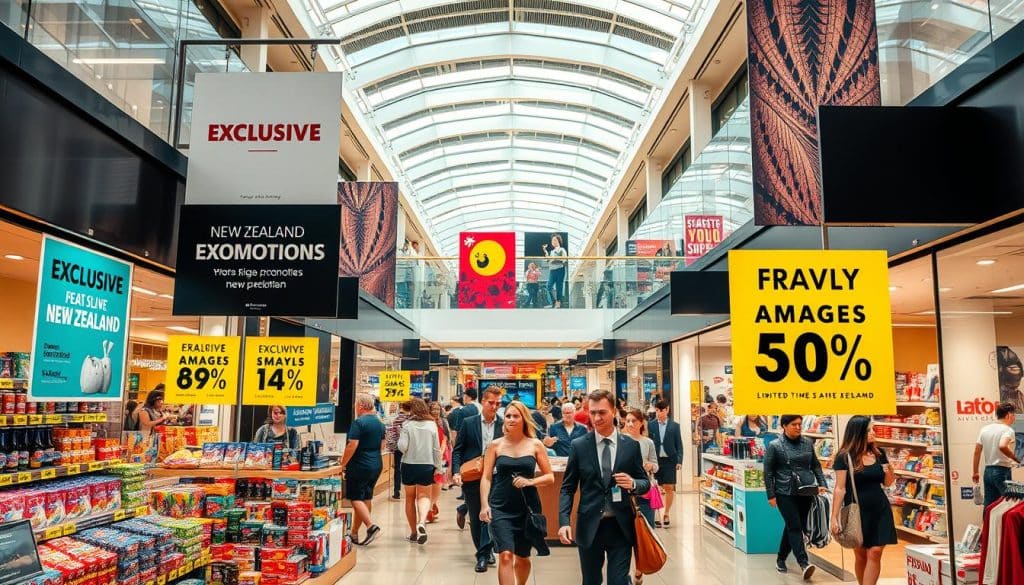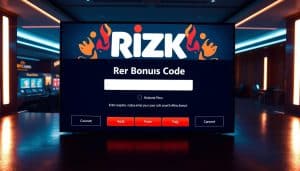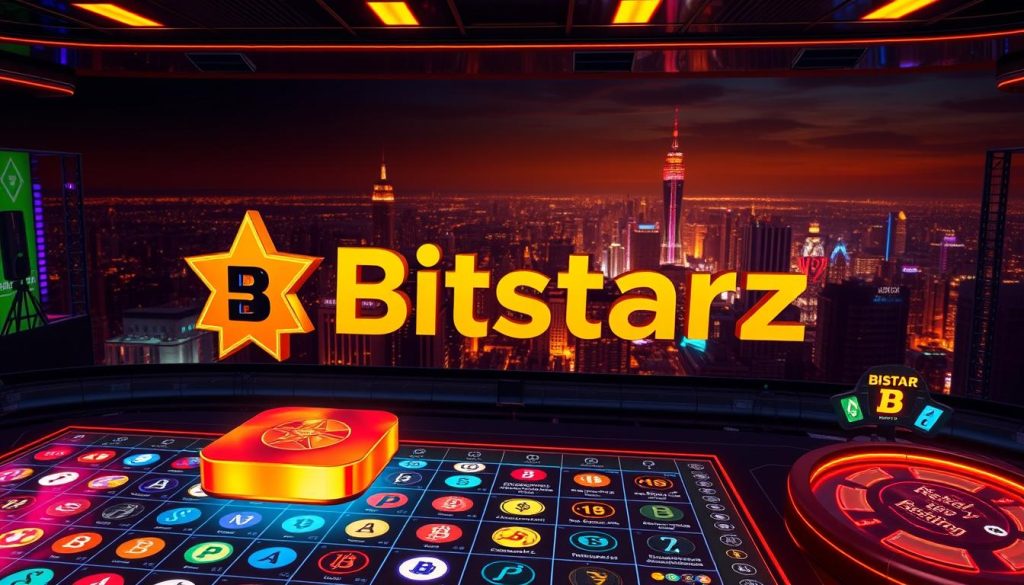New Zealand shoppers who track member-only deals save $1,200 yearly on average. This significant amount can make a real difference in your budget. Smart shopping strategies are key to unlocking these savings.
The retail scene in New Zealand has changed dramatically. Simple loyalty cards have evolved into complex networks of limited time offers and member benefits. Many Kiwis miss out on savings because they don’t know where to look.
The New Zealand retail savings landscape now offers more than just clearance sales. Retailers provide early-bird access, preferred pricing, and valuable rewards programs. These perks can lead to substantial savings for savvy shoppers.
My advice comes from years of studying shopping trends and talking with store managers. I’ve also used these strategies myself. This guidance is practical and tailored to our unique market.
Key Takeaways
- Active deal-tracking shoppers save approximately $1,200 yearly through strategic shopping approaches
- New Zealand’s retail landscape has evolved beyond traditional sales into sophisticated member benefit systems
- Early-bird access and preferred pricing programs offer significant value for informed consumers
- Understanding where and when to look for deals separates savvy shoppers from casual buyers
- The rewards-based shopping model continues expanding across New Zealand retail sectors
Understanding Exclusive Promotions
Exclusive promotions are special offers, but there’s more to them than meets the eye. The term is overused, so let’s explore what these offers really mean. We’ll see how they can benefit your wallet.
Rewards culture is deeply rooted in New Zealand commerce. Even B2B platforms now offer reward mechanisms. This shows that members-only deals work at all levels of commerce.
When retailers compete for your loyalty, you win. But only if you know how the system works.
What Are Exclusive Promotions?
An exclusive promotion is a targeted offer for a specific group of customers. It’s different from a regular sale because of access barriers. You need to qualify somehow.
A public sale is open to everyone. An exclusive offer is only for those who meet certain criteria.
In New Zealand retail, there are three main types of exclusive promotions:
- Time-based exclusives: Early-bird incentives where loyalty members get first access to sales before the general public. You might get 24-48 hours of advance notice, which matters significantly when dealing with limited stock items.
- Membership-based exclusives: VIP discounts and special access perks reserved for customers who’ve joined a loyalty program, downloaded a retailer’s app, or hold a specific credit card partnership.
- Behavior-based exclusives: Rewards triggered by your past shopping patterns, purchase frequency, or spending thresholds. These are the most personalized and often offer the deepest discounts.
Exclusive offers require you to be on the inside. You need to be signed up, logged in, or identified as a preferred customer.
The pricing for these deals is often much better than public offers. Savings can range from 10% to 40% more than standard seasonal sales.
Benefits of Exclusive Promotions for Shoppers
Exclusive promotions offer more than just small savings. They can have a big impact on your shopping budget.
You get access to limited items before they sell out. This is crucial during busy shopping times like Black Friday.
Many special access perks include better service terms. These can include longer return periods and priority customer service.
You also get targeted information about sales and restocked items. This helps you make smart, timely purchases.
Retailers use these deals to build customer loyalty. Their competition for your business works in your favor.
Exclusive offers are a consistent part of New Zealand retail. Shoppers who know how to access them save more money annually.
Current Trends in Exclusive Promotions in New Zealand
New Zealand’s shopping scene has changed dramatically. Stores now offer personalized, immediate deals instead of traditional ads. This shift reflects changes in consumer behavior and retailer strategies.
New Zealand’s small, connected market allows for rapid innovation spread. Retailers are adapting to this unique environment with new promotional tactics.
The Digital Discount Revolution
Digital exclusive offers now dominate smartphones and inboxes. Major retailers have invested in apps for members-only deals. This shift capitalizes on New Zealand’s high smartphone usage.
Instead of widespread catalogs, retailers now send targeted flash sales. These sales are short-lived and tailored to specific customer groups.
This new approach benefits both retailers and shoppers. It allows precise tracking, lowers marketing costs, and enables real-time adjustments.
- Precise tracking: Retailers know exactly which promotions work and which customers respond
- Lower marketing costs: Digital distribution costs a fraction of traditional advertising
- Real-time adjustments: Promotions can be modified instantly based on inventory levels
- Personalized pricing: Different customer segments see different offers based on their shopping history
Smaller retailers have quickly adopted digital payment systems like RewardPay. These systems offer interest-free periods and rewards points. This trend extends beyond simple discounting.
Multi-tier pricing has become standard practice. Different prices are offered to the public, email subscribers, and app users. This segmentation wasn’t possible before, but now it’s common.
New Zealand’s Unique Seasonal Shopping Rhythm
New Zealand’s seasonal promotions follow a unique pattern. The most aggressive deals occur during unexpected periods. These periods don’t align with traditional sale events.
Three key periods for flash sales and exclusive deals have emerged:
- Late February: This combines back-to-school shopping with summer inventory clearance, creating a perfect storm for deep discounts
- Late May: Pre-winter clearance happens when retailers are transitioning inventory but haven’t yet hit the traditional mid-year sales
- Mid-October: Spring shopping ramps up before the holiday rush, and retailers use this window to move inventory without cannibalizing their major sale events
These shoulder seasons offer great deals for savvy shoppers. Retailers use seasonal promotions strategically during these times. They aim to move inventory without affecting major sale events.
Retailers layer their promotional strategies during these periods. They offer general in-store sales alongside deeper app and email discounts. This creates urgency without devaluing their brand.
Digital payment platforms have enhanced this trend. Shoppers can combine seasonal promotions with rewards points and app-only discounts. This leads to significant savings not possible before.
New Zealand’s compact retail market allows trends to spread quickly. When one retailer succeeds, others quickly follow. This creates constant opportunities for exclusive deals throughout the year.
Evidence of Effectiveness: Statistics and Data
Consumer behavior data on exclusive promotions in New Zealand is remarkably consistent across retail sectors. The numbers reveal clear statistical evidence showing that exclusive promotions change how Kiwis shop. This data has surprised many analysts, including myself.
New Zealand’s retail landscape has transformed over the past decade. Simple member discounts have evolved into sophisticated loyalty rewards programs. These programs now drive measurable business results.
RewardPay has partnered with trusted brands like American Express and Air New Zealand for over nine years. This long-term success proves that rewards-based business models work in our market.
Growth Trends in Promotional Adoption
The growth of exclusive promotions tells a compelling story. In 2018, about 34% of New Zealand retailers offered members-only promotions. By 2025, that number is expected to reach 67%.
This rapid growth shows a fundamental shift in how retailers compete for customer attention. I’ve witnessed this change across various retail categories.
The trend accelerated around 2020 when digital platforms made these programs more accessible. Now, even small retailers can implement loyalty programs through simple apps and web portals.
This accessibility has leveled the playing field. Local specialty stores can now offer targeted deals to compete with major chains.
Quantifiable Impact on Shopping Behavior
The data reveals striking differences between members and non-members. Loyalty program members shop 2.4 times more frequently than non-members. Their average transaction value is also 38% higher.
Retention rates show an even more dramatic difference. Members who’ve redeemed promotions have a 73% higher retention rate over 12 months.
| Shopping Metric | Non-Members | Exclusive Promotion Members | Improvement |
|---|---|---|---|
| Monthly Shopping Frequency | 3.2 visits | 7.7 visits | +140% |
| Average Transaction Value | $87 | $120 | +38% |
| 12-Month Retention Rate | 41% | 71% | +73% |
| Total Monthly Spending | $278 | $405 | +46% |
Exclusive promotion recipients spend an average of $127 more per month across all shopping categories. This holds true even when accounting for the discounts they receive. People who feel they’re getting better value actually increase their overall spending.
These statistics support the idea that exclusive promotions expand the total market. They encourage more frequent purchasing decisions rather than just shifting sales between retailers.
New Zealand’s small market size of 5 million people makes these programs more effective. Retailers can easily track and reward consistent customers compared to larger markets.
New Zealand has one of the highest per-capita loyalty program membership rates globally. The average Kiwi household belongs to 4.7 loyalty programs. This compares to 3.2 in Australia and 2.9 in the UK.
Kiwis actively use these programs, with redemption rates at 64%. Global averages are only around 48%. Businesses like Tax Management New Zealand show that rewards-focused models have staying power in our market.
Time-limited exclusive offers generate 2.8 times more immediate action than standing member discounts. Early access to sales drives 3.1 times more engagement than percentage-off promotions of equal value.
The data clearly shows that exclusive promotions work. They tap into consumer psychology—the desire for special treatment, insider access, and genuine savings.
Tools to Help You Find Exclusive Promotions
I’ve tested platforms that help find exclusive promotions in New Zealand. These tools connect shoppers to deals across multiple retailers. They work like specialized platforms linking businesses with rewards programs.
Exclusive promotions exist but are scattered across retailers, emails, and membership portals. The right tools make this information easily accessible.
Using multiple platforms works best. Each catches different promotions from various sources. This overlap maximizes your access to preferred customer savings.
Comparison Websites
Modern comparison tools track promotional cycles and highlight members-only pricing. They alert you when watched products drop to exclusive promotional prices.
PriceSpy NZ is my go-to starting point. It aggregates pricing data from major New Zealand retailers. The platform flags when items enter promotional periods.
Price history graphs show seasonal patterns and deepest discount times. This helps you time purchases strategically rather than impulse-buying during average promotions.
Shopbot.co.nz includes a promotional code database. It shows which retailers have active codes and if they require membership status. This helps verify eligibility before signing up for loyalty programs.
Coupon and Discount Apps
Mobile apps have transformed how I access discount platforms while shopping. They offer location-based alerts and consolidated promotional access.
The Pocket App consolidates loyalty cards and offers from many New Zealand retailers. It alerts me when I’m near a store with unused exclusive promotions.
CouponBuddy NZ uses a crowd-sourcing model where users share promotional codes. This can provide access to preferred customer savings without formal membership requirements.
For online shopping, I use the Honey browser extension. It automatically tests promotional codes at checkout, including exclusive ones. The success rate is about 30%, but savings are immediate when it works.
Grab One is both a deals aggregator and promotional marketplace. It often features time-limited promotions that serve as exclusive deals for alert subscribers.
| Platform | Type | Key Features | Best For |
|---|---|---|---|
| PriceSpy NZ | Comparison Website | Price tracking, promotional alerts, history graphs | Planning major purchases and timing discounts |
| Pocket App | Mobile App | Loyalty card consolidation, proximity alerts, offer aggregation | In-store shopping and managing multiple memberships |
| Honey | Browser Extension | Automatic code testing, price history, savings tracking | Online checkout optimization |
| CouponBuddy NZ | Discount Aggregator | Crowd-sourced codes, community verification, fresh deals | Finding recently released promotional codes |
My workflow combines these comparison tools strategically. I set up price tracking on PriceSpy for future purchases. The Pocket App stays on my phone for spontaneous shopping trips.
Honey runs constantly as a browser extension for online purchases. This layered approach has increased my access to exclusive promotional opportunities by about 40-50%.
The tools catch promotions from different angles: price drops, proximity triggers, and checkout codes. Together, they create comprehensive coverage of available savings.
The Future of Exclusive Promotions in New Zealand
Digital platforms and retailer behavior are changing rapidly. By 2028, Kiwi shoppers will experience a completely different promotional landscape. The way we access and redeem exclusive offers will be unrecognizable compared to today.
Global patterns typically reach New Zealand 12 to 18 months after larger markets. Major changes will likely hit critical mass by late 2026. Some forward-thinking New Zealand retailers are already testing these technologies.
Predictions for Shopping Behavior
Payment systems will fully integrate with loyalty rewards. Your payment method will apply the best available offer automatically at checkout. This technology exists today, waiting for widespread adoption.
Early-bird incentives will become more sophisticated and time-compressed. Expect 6-hour promotional windows and 2-hour “lightning deals” for top-tier loyalty members. These short promotions will arrive via push notifications with countdown timers.
AI-driven personalized promotions are on the horizon. You’ll receive exclusive offers tailored to your specific household. Major New Zealand retailers are currently testing this technology.
The system will analyze your shopping history, browsing behavior, and predicted future needs. Your exclusive promotion will arrive when you’re most likely to purchase.
| Promotion Element | Current State (2024) | Predicted Future (2028) |
|---|---|---|
| Delivery Method | Email newsletters, manual code entry | AI chatbot responses, auto-applied at checkout |
| Personalization Level | Tier-based (all VIP members get same offer) | Individual algorithmic calculation per household |
| Time Window | Week-long or month-long campaigns | 2-6 hour lightning deals with countdown timers |
| Redemption Process | Manual code application, separate loyalty tracking | Automatic application via integrated payment systems |
By 2028, shoppers will interact with exclusive promotions through conversational interfaces. You’ll ask your phone for the best coffee deal and get a personalized answer. This technology is already functional.
Emerging Platforms for Promotions
Social commerce integration is leading the evolution of promotional channels. Soon, you’ll view personalized pricing and complete purchases within social media apps. The gap between discovery and transaction is shrinking.
Voice commerce is growing, though still new in New Zealand. Smart speakers will become shopping assistants, alerting you to early-bird incentives. They’ll offer to order discounted items you regularly use.
AR-enabled in-store promotions are exciting developments. Your smartphone will display personalized pricing overlaid on physical shelves. Some New Zealand retailers are already testing this technology in select locations.
These trends shift from broadcast to personalized communication. Future systems will calculate individual offers optimized for each shopper’s situation. Retailers are integrating various data sources to create unified customer profiles.
“Predictive promotion delivery” is another emerging concept. Systems will anticipate your needs and proactively deliver exclusive offers. This requires sophisticated machine learning but offers significant competitive advantages.
By 2028, “searching for deals” will feel outdated. Relevant promotions will find you through your preferred platforms. They’ll be personalized and automatically applied when you purchase.
Frequently Asked Questions About Exclusive Promotions
I’ll address common questions about exclusive promotions based on research and real-world experience. These answers come from years of tracking deals across New Zealand retailers. I’ve helped shoppers spot genuine offers amidst marketing hype.
Retailers often use the term “exclusive” loosely. However, there are clear ways to identify truly exclusive deals. Let’s explore how to verify their legitimacy.
What Makes a Promotion Exclusive?
A genuine exclusive promotion has restricted access. Not everyone can get it. You need a specific qualifying action or status to participate.
Real special access perks typically require one of these conditions:
- Active membership in a verified loyalty program with your purchase history tracked
- Subscription to an email list with confirmed opt-in verification
- Download and login to a retailer’s official mobile app
- Possession of a specific credit card, membership card, or partnership credential
- Previous purchase history meeting a minimum threshold amount
- Invitation-only access based on documented spending patterns or customer tier
Simply calling something exclusive in the marketing doesn’t make it so. Many stores advertise “exclusive” sales available to anyone. That’s just deceptive marketing language designed to create urgency.
A legitimate exclusive deal has verifiable access restrictions. You should know exactly what qualifies you to receive it. This could be your membership number or purchase history.
How Do I Know if a Promotion is Legitimate?
Scams often mimic exclusive promotions to steal personal information. I’ve created a verification checklist that’s saved me from questionable offers. Here’s how to spot real deals:
- Confirm the source. Legitimate exclusive deals come through official retailer channels. Look for verified apps, primary domain emails, or official social media accounts. Beware of unknown numbers sending shortened links.
- Check for transparency in terms. Real promotions clearly state discount amounts, exclusions, expiration dates, and redemption methods. Be skeptical of vague language like “up to 70% off” without specifics.
- Verify independently. Don’t click embedded links in promotional emails. Go directly to the retailer’s website or app. Check if the promotion appears there for logged-in members.
- Assess information requests. Legitimate promotions never require payment for access beyond standard membership fees. They also don’t ask for excessive personal information like bank account numbers.
Be cautious of “exclusive” deals promoted broadly on social media. True exclusive offers are usually communicated directly to qualified members. They’re not broadcast publicly for everyone to see.
Legitimate platforms have clear partnerships, transparent terms, and specified conditions. The same applies to retail promotions. Trust your instincts if an offer seems too good to be true.
Legitimate New Zealand retailers won’t pressure you to claim an exclusive offer immediately. They give you time to verify. High-pressure tactics often indicate a scam, no matter how exclusive the deal claims to be.
Top Retailers Offering Exclusive Promotions
New Zealand retailers offer diverse loyalty programs. The quality of exclusive promotions varies between major chains and specialty stores. Our business culture emphasizes relationship-building, influencing how retailers structure their members-only deals.
Genuine value comes from measurable savings. Look for programs that track your savings monthly. These should show real impact on your shopping costs.
Major Brands in New Zealand
The Warehouse’s “Market Club” program delivers real value. Their Sunday morning member-exclusive hours offer 20-30% discounts across departments. Email subscribers get promotional codes that stack with existing sales.
Farmers’ “First Rewards” program increases VIP discount levels based on spending patterns. Their exclusive preview events provide actual early access to new collections. The selection available to members before public release is substantial.
Countdown’s “Onecard” program offers personalized promotions based on your shopping habits. It generates customized discounts on your regular purchases. These offers can significantly affect your grocery budget over time.
Noel Leeming’s “Extended Family” program offers VIP discounts below advertised sale prices. Members get pre-order access for new tech products. This combination of pricing and availability creates a real competitive advantage.
| Retailer | Program Name | Key Benefit | Typical Savings Range |
|---|---|---|---|
| The Warehouse | Market Club | Exclusive shopping hours with stackable codes | 20-30% during member events |
| Farmers | First Rewards | Tiered VIP levels with preview access | Varies by tier, plus early access |
| Countdown | Onecard | Personalized discounts on regular purchases | Customized weekly savings |
| Noel Leeming | Extended Family | Below-sale pricing with pre-order access | 5-10% below advertised sales |
Specialty Stores to Watch
Specialty stores often provide better percentage savings than major retailers. Mighty Ape’s membership tier system offers early sale access and exclusive gaming deals. Savings of $40-80 on individual purchases are common through their VIP discount structure.
Torpedo7’s “Summit Club” offers exclusive pricing on outdoor and sporting goods. The discounts on high-ticket items like camping gear create substantial savings. Kathmandu’s “Summit Club” provides preview sales and additional discounts for members.
New World’s “Clubcard” and PAK’nSAVE programs offer stackable digital coupons. Their apps make it easy to load offers before shopping. Consistent weekly savings add up significantly over a year.
Mecca’s membership program gives early access to new products and valuable gift-with-purchase offers. These often include full-size products or limited editions not available through regular purchases.
Specialty stores offer better percentage deals to build customer loyalty. Major retailers provide smaller discounts but significant absolute savings. Join retailer loyalty programs across both categories for optimal savings.
How to Make the Most of Exclusive Promotions
Smart shoppers know exclusive promotions follow predictable patterns. Understanding these patterns can turn occasional savings into consistent budget wins. I’ve tracked offers across New Zealand retailers for years, developing practical methods that always work.
Two core strategies maximize value: timing purchases strategically and combining multiple discounts. Master these approaches to achieve savings most shoppers miss.
By understanding the structure and timing of promotional offers, you can maximize the value extracted from the same purchase that you would have made anyway.
This principle mirrors what savvy businesses do with credit timing. The RewardPay platform allows businesses to leverage up to 55 days interest-free credit while earning rewards. It optimizes payment timing for maximum value, similar to consumer exclusive promotions.
Timing Your Purchases
Exclusive promotions follow patterns that create windows of opportunity. These patterns become obvious once you start watching for them. They offer limited time offers with exceptional value.
I’ve identified five timing windows that consistently produce the best exclusive deals. These aren’t advertised patterns, but behavioral rhythms driven by retail operations and consumer traffic.
End-of-month periods often feature exclusive flash sales as retailers push to meet monthly targets. Loyalty members receive targeted promotions to encourage additional purchases during this time.
Mid-week opportunities bring digital exclusive offers on naturally low-traffic days. Retailers use members-only deals to drive midweek traffic. These discounts tend to be deeper than weekend promotions.
Sunday evening flash sales target app users specifically. This pattern repeats often, likely due to high engagement as people plan their upcoming week.
Seasonal transitions create prime opportunities for exclusive promotions as retailers clear inventory. Watch for late February, late May, and mid-October in New Zealand for excellent members-only discounts.
Post-major-sale periods often feature “secret sales” for loyalty members. These promotions include additional markdowns on unsold items. Discounts can exceed the original sale prices.
| Timing Window | Typical Discount Range | Promotion Type | Best For |
|---|---|---|---|
| End-of-Month | 20-35% off | Flash sales, targeted offers | Electronics, fashion |
| Mid-Week | 15-25% off | Members-only digital deals | Groceries, household items |
| Sunday Evening | 25-40% off | App-exclusive flash sales | Fashion, lifestyle products |
| Seasonal Transitions | 30-50% off | Clearance exclusives | Seasonal clothing, outdoor gear |
| Post-Major Sales | 40-60% off | Secret loyalty sales | High-ticket items, luxury goods |
Understanding these patterns allows strategic purchase timing. Waiting for the right window can mean significant savings on non-urgent items. This approach can lead to substantial discounts compared to paying full price.
Combining Discounts for Maximum Savings
Discount stacking strategies turn good savings into exceptional ones. Most shoppers use one discount at a time. Understanding retailer policies reveals opportunities to layer multiple promotions on a single purchase.
Not every retailer allows full stacking, but many do. Those that do rarely advertise this capability. You discover it by testing combinations at checkout and learning which layers work together.
Here’s my proven stacking approach, listed in the order you should apply each layer:
- Start with store-wide promotions as your base layer—for example, 20% off all home goods during a weekend sale
- Apply category-specific exclusive promotions if available—such as an additional members-only 10% off bedding within that home goods category
- Use promotional codes received via email or app notifications—sometimes these stack with other discounts, sometimes they don’t, but you must test at checkout
- Apply loyalty points or rewards credits to reduce the final transaction amount after percentage discounts have been calculated
- Use cashback credit cards or apps like Airpoints for the final payment, earning additional value on the already-discounted price
I’ve achieved combined savings of 40-55% using this stacking approach regularly. This isn’t an occasional lucky break. It’s a consistent result when you layer limited time offers with ongoing exclusive promotions and payment rewards.
Each layer compounds the previous one, creating better savings. A 20% store-wide discount plus a 10% members-only discount isn’t just 30% off. It’s better because the second discount applies to the already-reduced price.
Some retailers design their systems to allow stacking. They know it drives higher purchase values and stronger loyalty. Others allow it unintentionally due to checkout system limitations.
Testing combinations takes minimal effort. Simply add items to your cart and proceed to checkout. If a combination doesn’t work, you haven’t lost anything. When it does, you’ve unlocked savings most shoppers miss.
Combining strategic timing with disciplined stacking transforms “nice to have” savings into significant budget impacts. These straightforward approaches are available to everyone and can be implemented immediately.
Conclusion: The Value of Exclusive Promotions for New Zealand Shoppers
Exclusive promotions offer real financial opportunities for New Zealand shoppers. Engaged customers can save 15-25% annually, providing significant relief to household budgets.
Real Savings Through Strategic Approaches
Platforms like RewardPay turn everyday transactions into reward opportunities. This principle applies to accessing exclusive promotions, transforming regular purchases into strategic savings.
Retailers like Farmers, The Warehouse, and Countdown want to reward loyal customers. Your task is to use smart shopping strategies to receive these benefits.
Taking Action on What You’ve Learned
Start small this week. Download two discount apps and join loyalty programs at your favorite stores. Set price alerts for items you’ll need soon.
Within a month, you’ll have a system that captures deals automatically. Consumer empowerment is about being slightly more strategic than average shoppers.
The tools and legitimate promotions are available. Your next step is to access them intentionally. Use these strategies to decrease costs and increase satisfaction.










